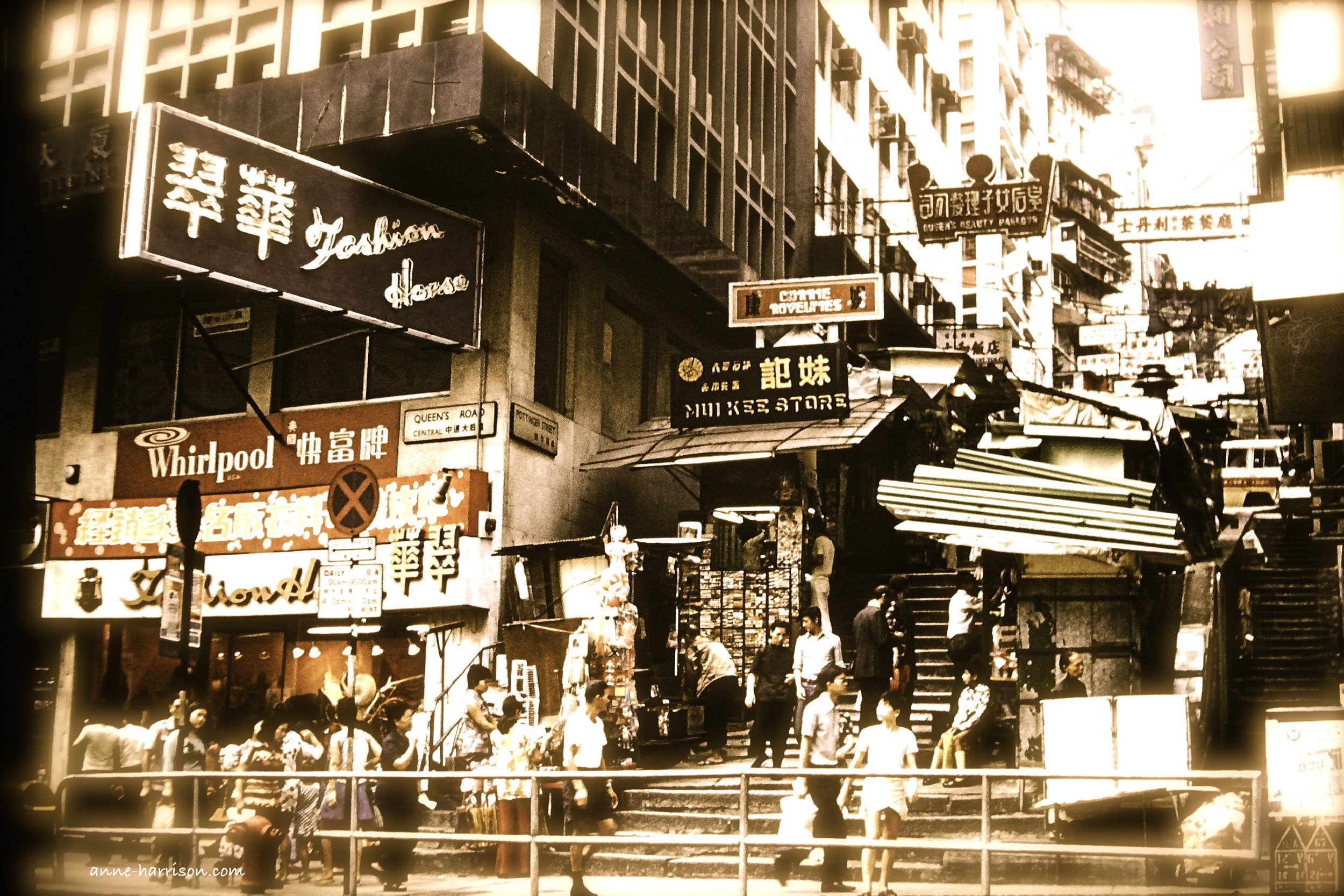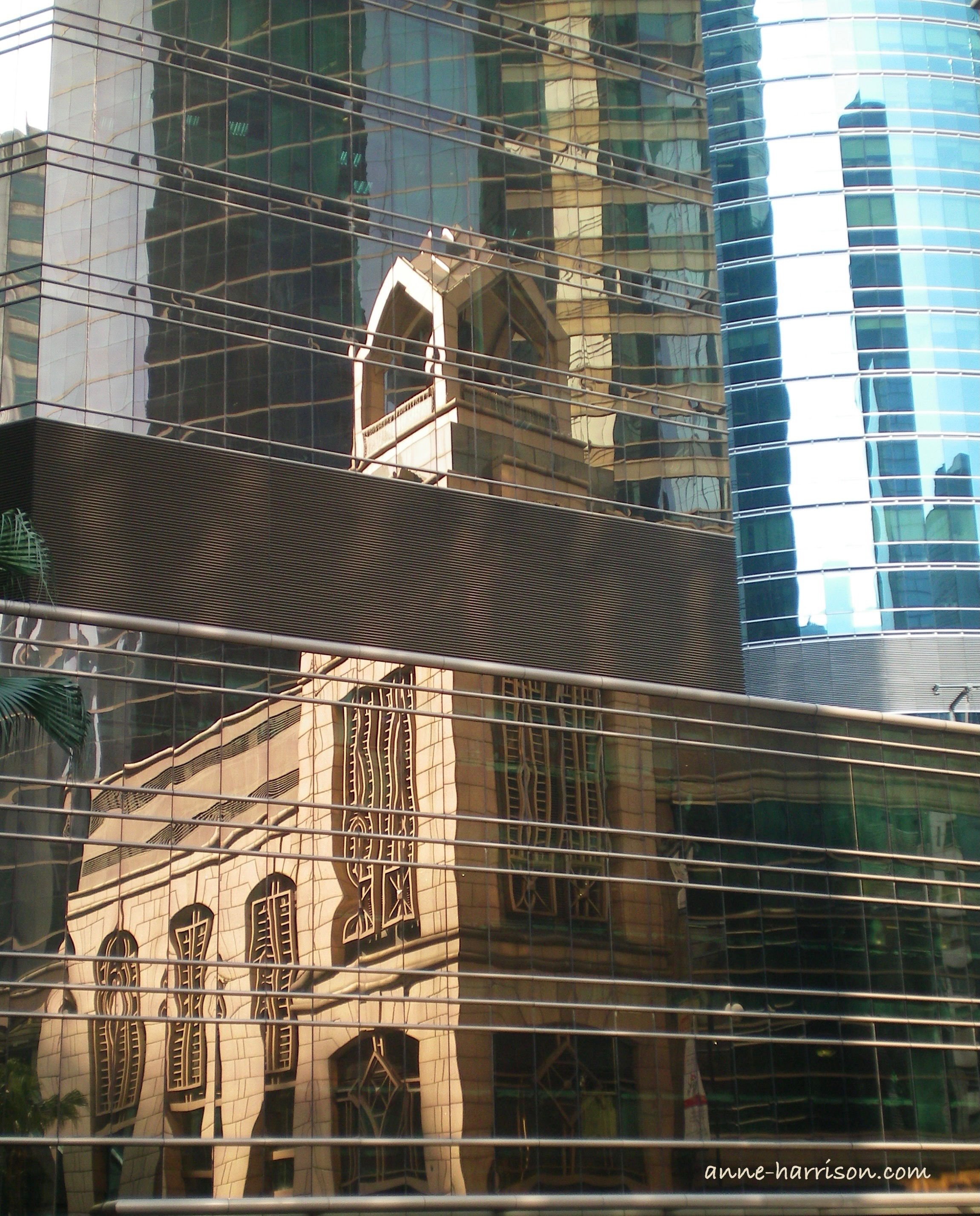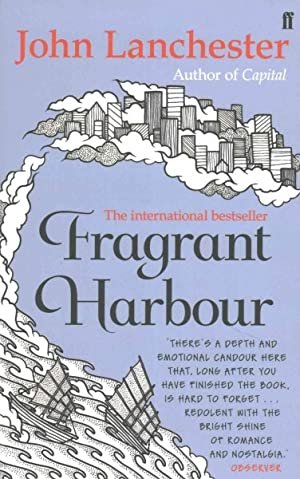A Few Hong Kong Markets
When I first went to Hong Kong life was in black and white © A. Harrison
I first went to Hong Kong some forty years ago, and immediately felt a bond with her vibrancy and way of life, her noise, her chaos, even the smell of the place. Shopping Hong Kong’s markets are always high on my to do list whenever I visit. Every time I discover a new one, perhaps only a street or two long, but I still have my favourites I return to again and again. They are also a great place to start when discovering The Fragrant Harbour for the first time. Combining local atmosphere with bargains, Hong Kong’s markets are a place where everything from bobby pins to (mostly fake) antiques are for sale – and when the heat and haggling become too much, there is always somewhere to sit and, with a cool drink and a delicacy to nibble, watch the world pass by.
The wall in my favourite fish and chip shop at Stanley © A. Harrison
Stanley Market
Originally a quiet fishing village before the arrival of the British, Stanley became a Japanese POW camp during the occupation in WWII. A visit to daily markets here combines sightseeing with quality shopping. Simply reaching Stanley involves a tour of Hong Kong. Buses 6, 6A and 6X begin at Exchange Square in Central and terminate at the markets. I always wait for a double-decker, then sit up the top as the bus winds through the narrow streets and hairpin turns of Hong Kong Island and down into Stanley via Repulse Bay, which was once home to pirates. Unfortunately the beautiful Repulse Bay Hotel, (where the Japanese accepted the British surrender, only to later surrender back to the British) no longer exists. In its place stands the disagreeable Repulse Bay Apartments, which upon completion had a large hole fashioned in the middle of one tower to allow the dragon of the mountain access to the sea.
Stanley Markets is a great place to buy almost anything, although what is for sale cycles in and out of fashion. My last visit provided me with a collection of Van Gough and Monet copies, plus old photos of The Fragrant Isle (as Hong Kong was once known). There are jeans, t-shirts, toys, jewellery, electronic gadgetry and a range of fashion from low to high-end, all of good quality, and usually at a fixed price. Down by the waterfront are a row of restaurants and coffee shops overlooking the sea, plus a great place for fish and chips.
Jardine’s Bazaar & Jardine’s Crescent
One of my favourite markets is easily reached by catching the MTR (Mass Transit Railway or subway) to Causeway Bay, taking exit F and simply following the signs. These short streets are jammed with stalls selling mostly women’s and children’s fashion, shoes and accessories. The range of hair-clips, earrings, watches and mobile-cases is impressive. I always make sure to explore the shops behind the stalls – they’re easily missed, and there is always something to find.
At the far end of Jardine’s is a wet market. Here bloodied carcasses hang on hooks beside skinned ox heads, and live crabs tied up with reeds are stacked beside tanks filled with fish and eels swarming to escape. Around a cluster of tables diners feast off meals prepared straight from the vendors. The markets then end in a blaze of flower stalls.
The maze of streets around Jardine’s Bazaar is jammed with shops, boutiques and arcades, including the giant mall of Times Square. SOGO is Hong Kong’s largest department store; Fashion Walk is lined with trendy (and expensive) designers. Neon signs fill the skyline, and the footpaths are impossibly crowded. It is a perfect place simply to wander and discover the unexpected. It’s almost impossible to get lost, even for me; a main street, or MTR station, is never far away.
Li Yuen St East and Li Yuen St West
These were the first of Hong Kong’s markets I ever visited, some forty years ago as a child. Simply catch the MTR to Central and take Exit C, and amongst the high-rises and expensive arcades are two lanes which have kept the air of an ancient bazaar. They run between Des Voeux Road and Queen’s Street, two of Central’s busiest streets, yet between the stalls you’ll find a man repairing shoes, or another doing dress alterations on an old singer sewing machine beside a woman fixing watches.
Like Jardine’s Bazaar, there’s a range of shops behind the stalls, and the place is jammed with clothes, shoes, bags and jewellery, tailored garments, beautiful silks as well as gifts and touristy finds. Although Hong Kong might at times seem awash with jeans and cheap t-shirts, each market always has something different for sale compared to the other markets. Both the quality and value here is good, and bargaining expected.
Joss stick sin the temple © A. Harrison
Cat Street Market
Between Hollywood Road and Upper Lascar Road, and just down a flight of stairs from the Man Mo Temple, is an area known as Cat Street. Home to expensive antique dealers, the streets are lined with stalls selling curios, second-hand goods and delightful fakes. It is a great place for cheap jewels and trinkets, Chairman Mao caps and memorabilia of how Hong Kong once was. It is worth wandering along just to gaze at the Ming Vases and jade in the windows of the antique, and dream. It can be reached via the Mid-Levels escalator.
Temple Street Men’s Market
This is Hong Kong’s largest night market. Simply take the MTR to Jordan (in Kowloon) and follow the signs. The market is named after the Tin Hau Temple, where hawkers once gathered under a giant banyan tree. This is the place for cheap clothes, watches, bags, electronics, sneakers, souvenirs, pirate music and movies, and fake brand names. With it opening at 4pm and continuing until midnight, it is also a great place for dai pai dong – open-air street dining. (The crab is highly recommended.)
Fresh fish for sale © A. Harrison
Although a pedestrian market, beware of cars as the markets stretch over several major roads. There are often street performers, opera stars, fortune tellers, and, especially at the far end of the market, palm and face readers. The night markets are a perfect way to end a long day of sight-seeing.
Ladies Market
Continue on the MTR beyond the Night Markets to either Prince Edward or Mong Kok Stations to reach Hong Kong’s Ladies Market. Despite the name, just about everything is for sale. It is exhaustingly crowded; Mong Kok remains the world’s most densely populated area, with 130,000 people per square kilometre. It opens earlier then the Night Market, running from midday to midnight.
If visiting in daylight, detour to the Yuen Po Street Bird Garden, where locals can be seen sitting with their birds. The air is full of their calls. Nearby is Flower Market Road, where some fifty shops sell a dazzling array of blooms.
Lastly, just explore. The best of Hong Kong’s markets are not in the guidebooks. Catch the wrong bus, or a tram to an unknown destination – there is always something interesting to find at the other end.
The Literary Traveller
With three interwoven stories, John Lanchester's Fragrant Harbour follows the change in Hong Kong from the time in 1935 when fragrant perfumes still drifted out to sea to greet incoming ships, to its birth as a modern economic miracle (with a slightly more heady aroma).
Through the eyes of the three narrators, the history of the island for most of the 20th century unfolds. Fragrant Harbour can virtually be used as a guide book, for it’s impossible not to walk the streets and see what has been written in the novel: to lament the disappearance of the old airport with its dramatic descent of the planes so close to the buildings one felt they could almost be touched, the smell of the water when catching the Star Ferry, taking the view from The Peak then walking around the mountain, becoming lost in the overgrowth.
There is the invasion by the Japanese in WWII with the establishment of a concentration camp at Stanley, followed by the unrest and riots of the 1960s. There is even reference to the notorious Mong Kok apartments, some of which can still be seen at Shek Kip Mei Estate. Mong Kok remains the mostly densely populated area on earth, and at the time many people simply disappeared when they entered the main door of this building.
By the end of the novel, Hong Kong has become what visitors now see: an economic powerhouse. Yet Lanchester explores the intricate finance deals between Hong Kong and the mainland, the role of the triads, and importance of family ties and honour. Most of all, it is a tribute to the people and history of an island the author so obviously loves.
Enjoy my writing? Please subscribe here to follow my blog. Or perhaps you’d like to buy me a coffee? (Or a pony?)
If you like my photos please click either here or on the link in my header to buy (or simply browse) my photos. Or else, please click here to buy either my poetry or novel ebooks. I even have a YouTube channel. Thank you!
Plus, this post contains affiliate links, from which I (potentially) earn a small commission.






